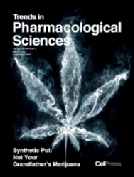
“Culpability studies, a common study design in the cannabis crash risk literature, typically report odds-ratios (OR) indicating the raised risks of a culpable accident. This parameter is of unclear policy relevance, and is frequently misinterpreted as an estimate of the increased crash risk, a practice that introduces a substantial “interpretational bias”.
RESULTS:
The model outperforms the culpability OR in bootstrap analyses. Used on actual study data, the average increase in crash risk is estimated at 1.28 (1.16-1.40). The pooled increased risk of a culpable crash is estimated as 1.42 (95% credibility interval 1.11-1.75), which is similar to pooled estimates using traditional ORs (1.46, 95% CI: 1.24-1.72). The attributable risk fraction of cannabis impaired driving is estimated to lie below 2% for all but two of the included studies.
CONCLUSIONS:
Culpability ORs exaggerate risk increases and parameter uncertainty when misinterpreted as total crash ORs. The increased crash risk associated with THC-positive drivers in culpability studies is low.”
https://www.ncbi.nlm.nih.gov/pubmed/30468948
https://www.sciencedirect.com/science/article/pii/S0001457518304706?via%3Dihub






 “Changes in lipid metabolism are intimately related to cancer. Several classes of bioactive lipids play roles in the regulation of signaling pathways involved in neoplastic transformation and tumor growth and progression.
“Changes in lipid metabolism are intimately related to cancer. Several classes of bioactive lipids play roles in the regulation of signaling pathways involved in neoplastic transformation and tumor growth and progression.

